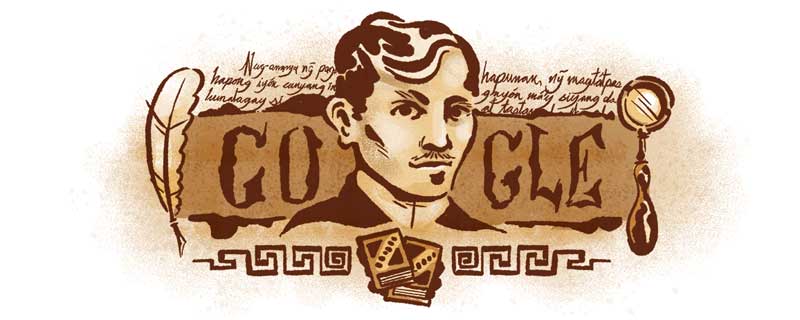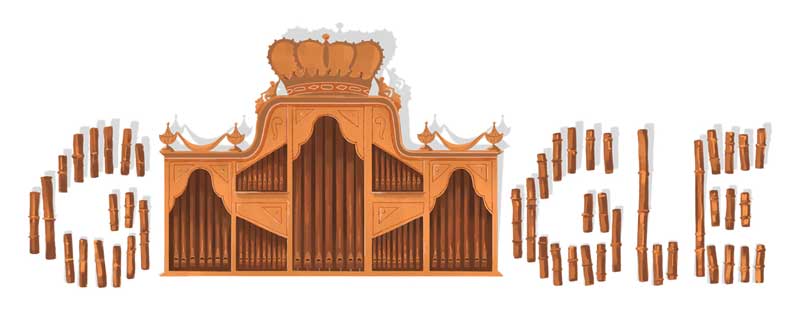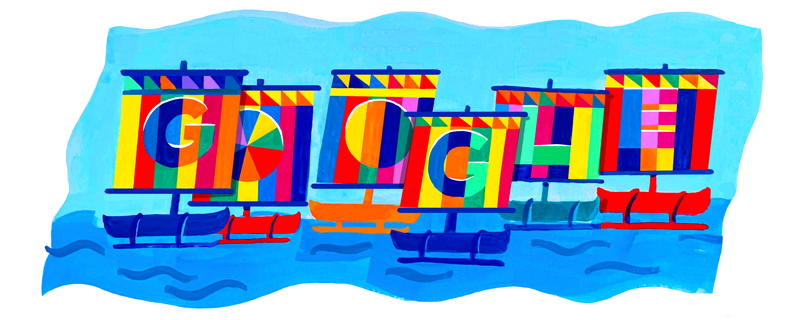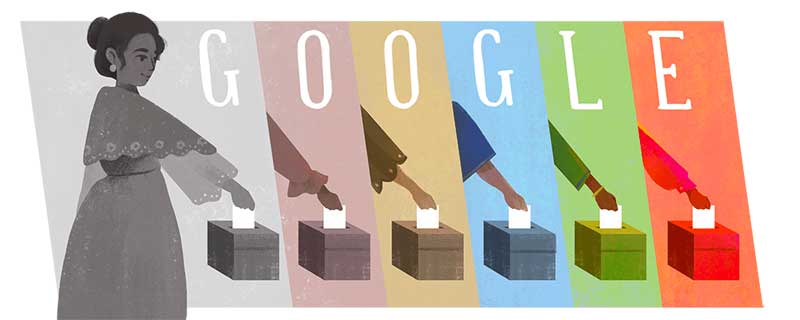This year, the Philippines celebrates its 125th Independence Day from the Spanish—remembering and honoring our freedom to be proud as Filipinos is always a cause for celebration. For a long time now, Google has stood in solidarity with the Philippines. And one of the many ways they show that support is through occasional Filipino-themed Google Doodles, beyond the Philippine Independence Day Doodle.
These Pinoy Doodles touch on many different facets of Filipino culture—from important historical heroes and figures, local cultural icons, and the beautiful sights from all over the country, Google makes the Philippines truly seen and acknowledged as a gem of the world.
To get in the Pinoy Pride spirit this Independence Day, here are five Google Doodles worth revisiting:
1. Jose Rizal’s 158th birthday
(https://www.google.com/doodles/jose-rizals-158th-birthday)
No Filipino pride celebration is complete without honoring the country’s greatest hero. Google paid tribute to Dr. Jose Rizal back in 2019 with a Doodle that put the hero’s visage front and center, flanked by “Google” stylized similarly to the famous original cover of Noli Me Tangere, one of his two masterpiece novels—both of which are included at the bottom of the illustration.
As an added touch, the opening passages of the novel are written in the artwork’s background, while the quill and the magnifying glass bordering it make reference to Rizal’s professions as a writer and ophthalmologist.
2. The Adobo Doodle
(https://www.google.com/doodles/celebrating-filipino-adobo)
To celebrate Filipino culture is also to celebrate its food, which is why Google put everyone’s favorite adobo front and center earlier this year. The mouthwatering illustration by Filipino-American Google artist Anthony Irwin calls back to the savory goodness of the adobo, which is always enjoyed in different and unique ways among different cooks, households, and restaurants.
Undoubtedly Filipino elements line this artwork, from the Pinoy kids on the side and the wooden utensils, while the ingredients—vegetables and meats—make up the core of the Doodle.
3. The legendary Las Piñas Bamboo Organ
(https://www.google.com/doodles/195th-anniversary-of-las-pinas-bamboo-organ)
The term “national treasure” is reserved only for the finest and most iconic creations of a particular culture—and the Las Piñas Bamboo Organ, a marvel of engineering and craftsmanship, more than deserves this title.
This 2019 Doodle commemorating the 195th anniversary of the creation of the oldest, largest, and only bamboo pipe organ in the whole world brought immense pride to the Philippines. The Doodle is simple and powerful: the Gs, L, and E of Google were rendered in bamboo pipes, while the two Os are signified by the full organ. If you haven’t visited this at the St. Joseph Parish Church in Las Piñas, this is your sign to do it now.
4. The colorful Regatta de Zamboanga
(https://www.google.com/doodles/celebrating-the-regatta-de-zamboanga)
The beauty of the Philippines and its culture is not just confined to Manila; the country has 7,107 islands, and many of its peoples have their own colorful rituals and traditions worth seeing. This includes the vivid Regatta de Zamboanga, a fluvial race held every October comprised of vintas, outrigger boats with vibrant and intricate sails.
Google’s Doodle celebrating the Regatta last October is in-your-face, just like the parade of dazzling vintas—nothing complicated, just a bevy of boats with sails spelling out Google. But it’s everything that the Regatta really is, and there’s just nothing like it.
5. Rosa Sevilla de Alvero’s 142nd Birthday
(https://www.google.com/doodles/rosa-sevilla-de-alveros-142nd-birthday)
Rsa Rosa Sevilla de Alvero is a journalist, educator, and activist who is widely considered one of the most influential suffragists in Filipino history.
As a child, she was sent to live with her aunt, an educator who hosted Filipino patriots and intellectuals at her home. Sevilla often eavesdropped on their conversations about battling educational colonialism—revolutionary discussions that helped mold her beliefs. At just 21, Alvero founded the Instituto de Mujeres (“Women’s Institute”) of Manila, one of the first schools for women in Filipino history.
The institute became a hotbed for progress under Sevilla’s leadership—educating women on topics such as suffrage, vocation and Tagalog. She also collaborated with notable Filipino Tagalog poets to present the first balagtasan (a debate held in poetic verse), which sparked a movement for Tagalog to become the national language. With her institution in good hands, Sevilla left Manila in 1916 to rally women across the country in her fight for suffrage, later founding the Liga Nacional de Damas Filipinas (“National League of Filipino Women”) to support her cause.
For the rest of the Filipino Google Doodles, visit google.com/doodles?q=philippines.
Liked this post? Follow SwirlingOverCoffee on Facebook, YouTube, and Instagram.






